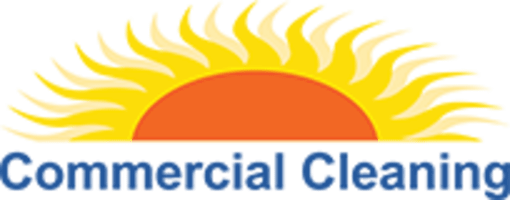Maintaining cleanliness in large commercial spaces presents unique challenges due to the scale and complexity of the environment. From office buildings to retail outlets, warehouses, and manufacturing facilities, efficient Streamlining Cleaning processes are essential for ensuring a safe, healthy, and inviting atmosphere for employees, customers, and visitors. In this comprehensive guide, we’ll explore strategies and best practices to streamline cleaning processes for large commercial spaces, optimizing efficiency and effectiveness.
Ways to Streamline Cleaning Process For Large Commercial Spaces
Conduct a Comprehensive Assessment:
Before implementing any cleaning process improvements, it’s crucial to conduct a thorough assessment of the commercial space. Identify high-traffic areas, problem areas prone to dirt and grime buildup, and areas requiring specialized cleaning attention (such as restrooms, kitchens, and production floors). Take note of the types of surfaces and materials present in each area to determine the appropriate cleaning methods and products.
Develop a Customized Cleaning Plan:
Based on the assessment findings, develop a customized cleaning plan tailored to the specific needs of the commercial space. Define cleaning frequencies for different areas and tasks, considering factors such as foot traffic, usage patterns, and cleanliness standards. Establish clear protocols for routine cleaning, deep cleaning, and periodic maintenance tasks to ensure consistency and accountability among cleaning staff.
Invest in the Right Equipment and Supplies:
Equipping cleaning staff with the right tools and supplies is essential for optimizing cleaning efficiency and effectiveness. Invest in commercial-grade cleaning equipment such as floor scrubbers, carpet extractors, pressure washers, and vacuum cleaners designed for large-scale cleaning applications. Select cleaning products and chemicals that are safe, eco-friendly, and effective for various surfaces and contaminants encountered in commercial spaces.
Implement Time-Saving Techniques:
Time is of the essence when cleaning large commercial spaces. Implement time-saving techniques and workflows to maximize cleaning efficiency without compromising quality. For example, adopt zone cleaning methods where cleaning staff focus on one area or floor at a time to minimize backtracking and maximize productivity. Utilize color-coded cleaning tools and microfiber cloths to prevent cross-contamination and streamline cleaning tasks.
Embrace Technology and Automation:
Technology can play a significant role in streamlining cleaning processes for large commercial spaces. Consider investing in cleaning management software to schedule cleaning tasks, track work progress, and monitor inventory levels of cleaning supplies. Explore automation solutions such as robotic cleaners for floor maintenance or UV disinfection systems for germ control in high-risk areas. These technologies can improve cleaning efficiency, reduce labor costs, and enhance cleaning outcomes.
Train and Empower Cleaning Staff:
Proper training and empowerment of cleaning staff are essential for executing streamlined cleaning processes effectively. Provide comprehensive training on cleaning techniques, equipment operation, safety protocols, and chemical handling to ensure competence and compliance. Empower cleaning staff to take ownership of their work by fostering a culture of accountability, teamwork, and continuous improvement. Encourage feedback and collaboration to identify opportunities for process optimization and innovation.
Prioritize Health and Safety:
Maintaining health and safety standards is paramount when cleaning large commercial spaces, particularly in light of current public health concerns. Implement rigorous cleaning and disinfection protocols to minimize the spread of germs, viruses, and pathogens. Provide personal protective equipment (PPE) such as gloves, masks, and eye protection to cleaning staff to mitigate exposure risks. Regularly communicate and reinforce safety guidelines to ensure compliance and protect the well-being of cleaning personnel and building occupants.
Monitor Performance and Adjust Accordingly:
Continuous monitoring and evaluation of cleaning performance are essential for identifying areas of improvement and ensuring ongoing optimization. Establish key performance indicators (KPIs) such as cleanliness scores, customer satisfaction ratings, and task completion times to measure the effectiveness of cleaning processes. Use feedback from building occupants, facility managers, and cleaning staff to identify pain points and areas for refinement. Adjust cleaning schedules, procedures, and resource allocations as needed to address evolving needs and maintain high standards of cleanliness.
Conclusion:
Streamlining cleaning processes for large commercial spaces requires careful planning, investment in resources, and a commitment to excellence. By conducting a comprehensive assessment, developing customized cleaning plans, investing in the right equipment and supplies, implementing time-saving techniques, embracing technology and automation, training and empowering cleaning staff, prioritizing health and safety, and monitoring performance, businesses can achieve optimal cleaning efficiency and effectiveness. A clean and well-maintained commercial environment not only enhances the image and reputation of the business but also contributes to the health, safety, and satisfaction of employees, customers, and visitors.
